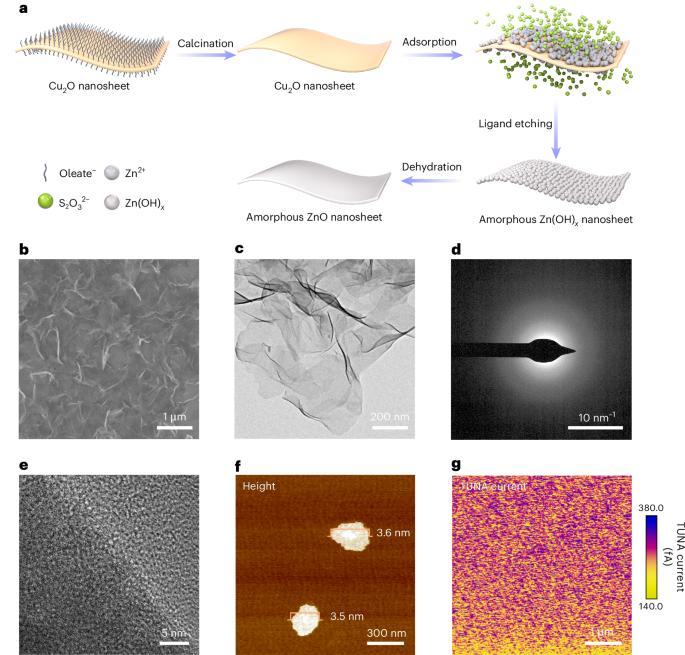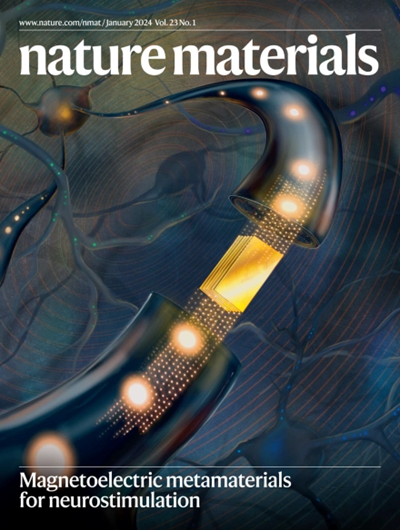具有双组分协同作用的混合界面层使有机太阳能电池具有21%的效率
IF 38.5
1区 材料科学
Q1 CHEMISTRY, PHYSICAL
引用次数: 0
摘要
阴极界面层(CIL)对有机太阳能电池(OSCs)的电子提取和电荷重组起着至关重要的作用。然而,大多数最先进的CILs受到有限的电导率,高重组和不良形态的限制,这些共同阻碍了器件的效率和稳定性。在这里,我们报告了一种无机-有机杂化CIL (AZnO-F3N),通过双组分协同策略,将有机材料PNDIT-F3N与二维无定形氧化锌集成在一起。该设计利用了二维无定形氧化锌与PNDIT-F3N之间的协同相互作用,从而减少了界面缺陷,增强了导电性,改善了薄膜均匀性。含有AZnO-F3N CIL的OSCs表现出更有效的电荷提取和传输,同时减少了重组。因此,基于D18: l8 - bo的二进制OSC实现了20.6%的效率。引入BTP-eC9作为第三个组件,进一步将效率提高到21.0%(认证为20.8%)。此外,CIL在各种有源层、厚膜结构和柔性器件上具有多功能性,强调了其推进OSC技术的巨大潜力。本文章由计算机程序翻译,如有差异,请以英文原文为准。


Organic solar cells with 21% efficiency enabled by a hybrid interfacial layer with dual-component synergy
The cathode interfacial layer (CIL) critically influences electron extraction and charge recombination, thereby playing a pivotal role in organic solar cells (OSCs). However, most state-of-the-art CILs are constrained by limited conductivity, high recombination and poor morphology, which collectively hinder device efficiency and stability. Here we report an inorganic–organic hybrid CIL (AZnO-F3N), developed by a dual-component synergy strategy, which integrates organic material PNDIT-F3N with two-dimensional amorphous zinc oxide. This design leverages the synergistic interactions between two-dimensional amorphous zinc oxide and PNDIT-F3N, resulting in reduced interfacial defect, enhanced conductivity and improved film uniformity. OSCs incorporating the AZnO-F3N CIL exhibit more efficient charge extraction and transport, along with reduced recombination. Consequently, a D18:L8-BO-based binary OSC achieves an efficiency of 20.6%. The introduction of BTP-eC9 as the third component further elevates the efficiency to 21.0% (certified as 20.8%). Moreover, the CIL demonstrates versatility across various active layers, thick-film configuration and flexible devices, underscoring its great potential to advance OSC technology. A hybrid cathode interfacial layer (AZnO-F3N) is developed, delivering 21.0% efficiency along with excellent stability, mechanical robustness and broad versatility, highlighting its potential to advance organic solar cells.
求助全文
通过发布文献求助,成功后即可免费获取论文全文。
去求助
来源期刊

Nature Materials
工程技术-材料科学:综合
CiteScore
62.20
自引率
0.70%
发文量
221
审稿时长
3.2 months
期刊介绍:
Nature Materials is a monthly multi-disciplinary journal aimed at bringing together cutting-edge research across the entire spectrum of materials science and engineering. It covers all applied and fundamental aspects of the synthesis/processing, structure/composition, properties, and performance of materials. The journal recognizes that materials research has an increasing impact on classical disciplines such as physics, chemistry, and biology.
Additionally, Nature Materials provides a forum for the development of a common identity among materials scientists and encourages interdisciplinary collaboration. It takes an integrated and balanced approach to all areas of materials research, fostering the exchange of ideas between scientists involved in different disciplines.
Nature Materials is an invaluable resource for scientists in academia and industry who are active in discovering and developing materials and materials-related concepts. It offers engaging and informative papers of exceptional significance and quality, with the aim of influencing the development of society in the future.
 求助内容:
求助内容: 应助结果提醒方式:
应助结果提醒方式:


